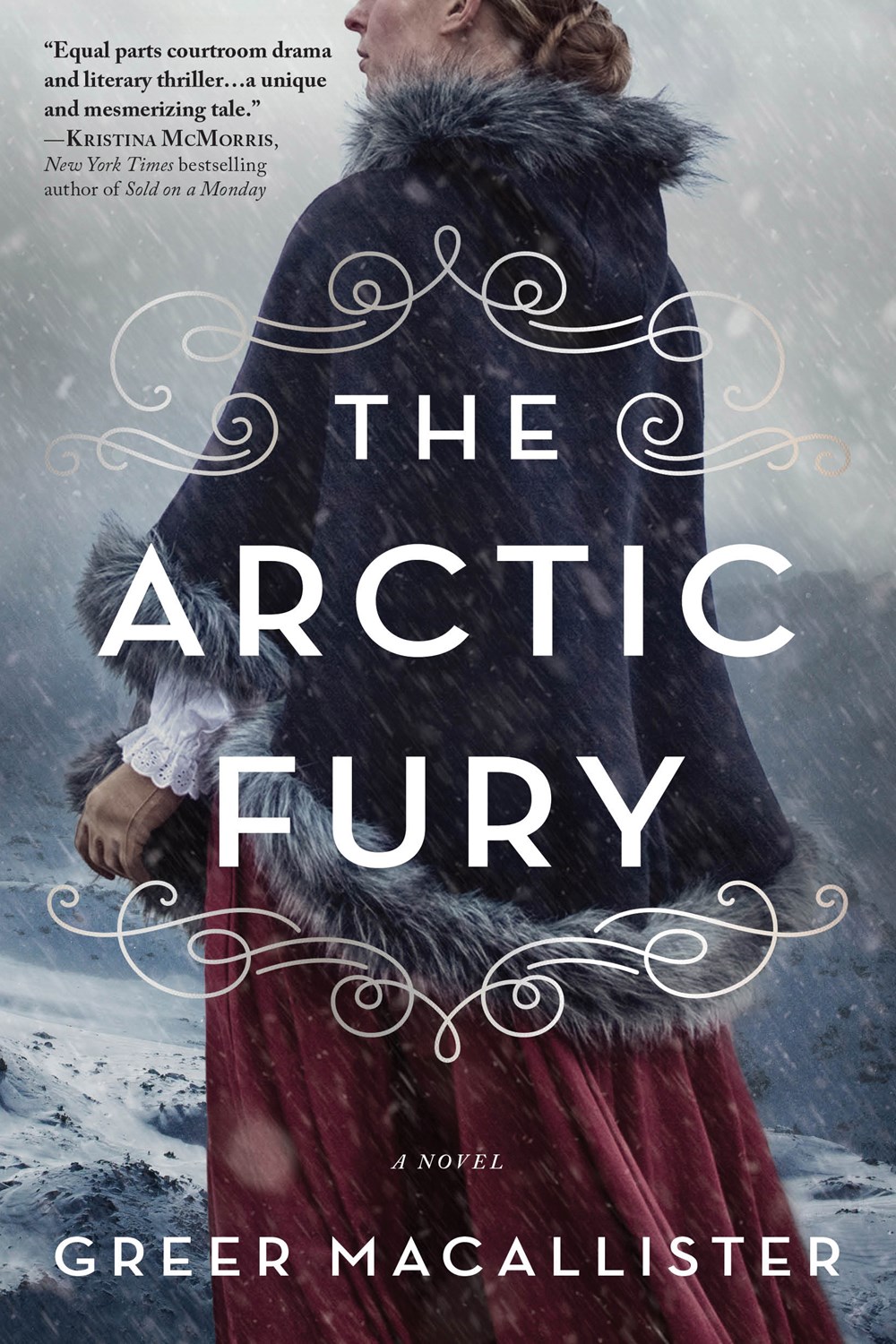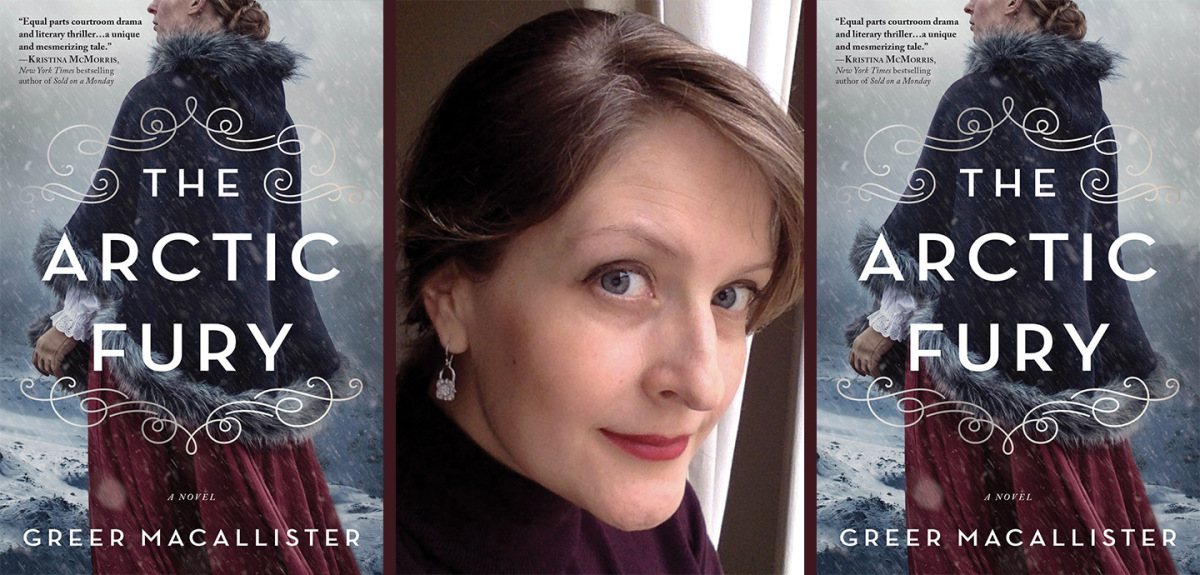[ad_1]
Greer Macallister’s thrilling historical fiction novel, The Arctic Fury, is a love letter to adventurous women, unlikely friendships, and finding possibilities in a bleak, unforgiving wilderness. Set in the 1850s, a mysterious, wealthy woman hires guide Virginia Reeve to lead an expedition to find her husband lost in the Arctic North. The novel opens in court—Virginia is on trial for the murder of one of the women she led into the icy tundra—and the narrative moves between the trial and the expedition, giving multiple characters voices and perspectives in the process. In the pages that follow, readers are led on a literary adventure: into the secrets, tragedies, and twists of their expedition, as well as through their individual pasts that led them to the edge of their known worlds.
Jen Cox
This novel is a seamless hybrid of real events and imagined stories. Which—perhaps previously untold—truths from the 1800s did you want to capture in your fiction?
Greer Macallister
It’s such a mishmash! First, I got really interested in the period of Arctic exploration in the 1840s and 1850s, when these repurposed warships full of British men were just sailing over and over into this vast frozen unknown, this incredibly inhospitable territory. It’s very man-against-nature, and it’s also a story of massive hubris. But history tends to flatten things out. There isn’t just one story to tell about any particular time or place. So when I looked at the women of this same period—when most history books would tell us women were homebound, domestic, subservient to male partners—there were so many great examples of women on the fringes of society doing bold and dangerous things. So I gave them a portion of that Arctic story, not because it’s historically accurate, but because I love the power of “what if.”
Jen Cox
There are thirteen women who first embark upon the arctic journey, and, too, other female characters who play big roles throughout the story. How did you decide on which women would make the journey and what they would bring to the team?
Greer Macallister
It took a while to get the full roster locked down. Virginia came first, and of course Lady Franklin playing her part. Then I started filling in women based on real figures of the period, real things that women were doing—everything from botanical illustration to journalism to mountaineering—that would indicate they’d be open to joining this kind of risky undertaking. I built from there. For example, I knew the team would be better off having someone with medical knowledge, and Siobhan’s whole story grew out of that. There were definitely additions and subtractions during the drafting process.
Jen Cox
The Arctic world is so removed from society. In which ways does it limit the women? In which ways does it free them?
Greer Macallister
Survival is such a struggle in an environment like this, it’s all-consuming. So you don’t have the comforts of civilization, the luxuries, but you don’t have the constraints either. These women who never would have interacted with each other in regular society come to depend on each other in a primal, absolute way. None of them can survive alone. Some of them don’t survive anyway, of course, but they have to work together if they’re going to even have a chance.
Jen Cox
Virginia, the leader of the expedition, is someone who has survived tremendous loss in her life. Why does she return to the wilderness that has already stolen so much from her?
Greer Macallister
Good question! I think it’s because she doesn’t really know how to be herself anywhere else. She’s not good at society, she’s not good at cities. The worst experiences of her life took place in the wilderness, yes, but so did the best. When she’s offered a once-in-a-lifetime opportunity, she’s not going to let that slip by.
Jen Cox
The juxtaposition between the court scenes and the journey creates a tremendous amount of tension from the novel’s very first pages. We know from the present-day action that not all of the women made it back in one piece, if they made it back at all. How did you want this knowledge to inform readers as they witnessed the oceanic and arctic adventure?
Greer Macallister
It’s all about cranking up that tension. You know there’s loss, you just don’t know exactly when it’s coming. I want readers to constantly be doing math in their heads, trying to figure out who makes it back and who doesn’t, as they’re reading the expedition scenes. Every time you switch back and forth between the expedition and the trial, you’re recalculating: who are those five survivors? Okay, I see you mentioned Althea, but what about Ebba? It’s a little like the great first line of Toni Morrison’s Paradise, which becomes the lens you read the entire book through: “They shoot the white girl first.” Of course there’s famously no answer to that riddle, but providing that filter, it’s a powerful tool for the author to shift the reader’s experience.
Jen Cox
I loved that you included characters with identities that are often overlooked in historical fiction. Without saying too much, I appreciated that the queer people and people of color are treated with dignity and complexity. Was this something you had in mind as you crafted these characters?
Greer Macallister
Absolutely! As I said before, history tends to flatten things out. Another way of saying that is that history books tend to fill up with whatever stories that white men with power decided at some point were important to tell. But all the kinds of people we have in modern society have always existed. Queer people, trans people, people with disabilities, neurodivergent people, people of color—everybody’s been here all along. I think it’s essential to write inclusively to fight back against that whitewashed narrative. It’s more accurate and it’s also way more interesting. You take care with it, you acknowledge the responsibility of it, you put in the work, you get sensitivity readers if you need them, but you don’t just shrug your shoulders and say, “Oh, that sounds hard.” Of course it’s hard! But I think we have to do it. That, and support and promote books by people with historically marginalized identities, which does even more to contradict that flattened, simplified, whitewashed version of history so many of us grew up with.
Jen Cox
This is your fourth novel. How was writing this one different from the rest?
Greer Macallister
Somehow it was both the hardest and the fastest. I got myself into a deadline pinch, which I’ve never done before, and had to write the bulk of the first draft in just a few months. I was still researching while I was writing that draft, which I had told myself I’d never do, but a deadline is a deadline. Add that to the complexity of 13 different points of view, which was my idea and therefore totally my fault, and it was a serious uphill climb. If I hadn’t already signed the contract to write it, I think there’s a very good chance I would have given up. And then when my agent and editor read it, they both said it was the best thing I’ve done yet. So maybe that kind of pressure is good for me? But I kind of don’t want to find out.
Jen Cox
If you were a member of the expedition, what would your role have been?
Greer Macallister
The younger me was more ambitious, so at one time in my life, I might have been a leader like Virginia. At this point I’d say I’m more of a Margaret, more cautious, more of a supporting player, writing things down. The truth is that I am such a boring person in real life, Lady Jane Franklin wouldn’t have invited me on this expedition to start with. Which is why I write fiction and not memoir.

Fiction
The Arctic Fury
By Greer Macallister
Sourcebooks Landmark
Published December 1, 2020
[ad_2]
Source link
